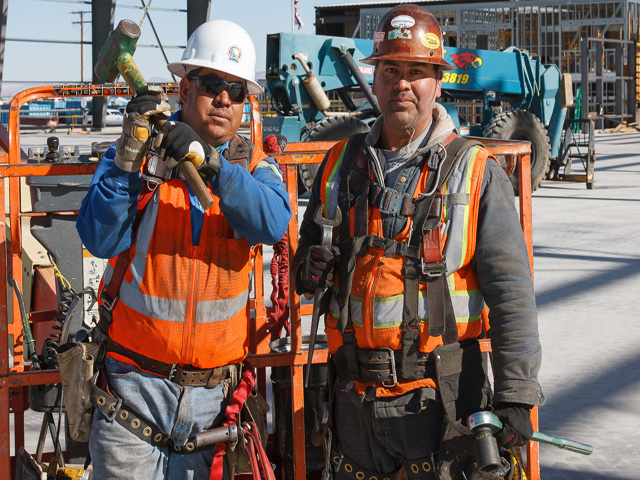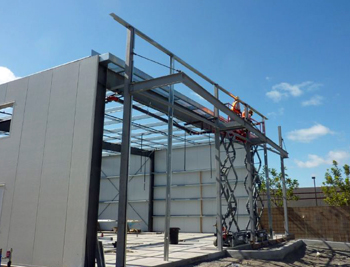Construction Management
Construction management (CM) is project management as it applies to the commercial or industrial construction sector. The need for construction management is in proportion to project complexity. The Owner and/or the Contractor manages numerous responsibilities involved in these seven categories: project management planning, managing cost, managing time, managing quality, contract administration, safety management, and professional practice.
Choosing to use construction management or not falls on the Owner. To inform this decision, the Owner must honestly determine what his level of involvement will be. He has to assess his own strengths and weaknesses, calculate the degree of commitment he can afford and rate his knowledge of the design, permitting and building processes. For small-scale projects he may want to run the show and even act as General Contractor. But for jobs with even moderate complexity, complete project ownership simply isn't possible.

The Owner must also select a project model and delivery method, based on desired contractual arrangements with designers and builders and on determining where the risk will reside. One option is to hire an architect to complete both preliminary and detailed design documents followed by bidding the construction to general contractors. This approach is known as the traditional Design-Bid-Build (DBB) delivery method, wherein the risk remains with the Owner. A second option is to hire a Design-Build (DB) team responsible for the entire process, wherein risk resides jointly with designer and contractor. A third option would be to separately hire an architect and a Construction Manager at Risk (CMatR). In this scenario, the CMatR assumes the risk but is fully involved at the start and collaborates closely with the architect during the design phase.
When the Owner feels unequipped to handle the important model and delivery decisions, he can contract with a third entity, known as CM-Agency. The CM Agency is not at risk but acts as an independent consultant on the Owner's behalf, selecting the approach deemed most appropriate and managing the entire process.
Construction Management Functions and Process
Project complexity does not correlate precisely with the type of construction. For instance, if the type of construction is tenant improvements, the building may or may not continue to be occupied during the project. The work may be straightforward or it might entail a complete retrofit to accommodate the new tenant's needs.
 If the Owner decides to implement Construction Management, the overall process consists of four basic functions. The first function specifies project objectives, including determining the type of building and method of construction; identifying the architects, builders, and contractors; and delineating project scope, budget, schedule, and performance requirements.
If the Owner decides to implement Construction Management, the overall process consists of four basic functions. The first function specifies project objectives, including determining the type of building and method of construction; identifying the architects, builders, and contractors; and delineating project scope, budget, schedule, and performance requirements.
The second function has to do with procurement and management of labor, materials, equipment, and other resources. This means researching resource availability; calling for and evaluating bids; and assembling all resources to accomplish the given task at maximum efficiency.
The third and fourth functions of CM are ongoing coordination and communication. The construction manager must create a realistic timetable and budget; facilitate interactions among Owner, designers, builders, and contractors; and revise plans if necessary to address problems that arise. Good communication is key. The construction manager discusses with the Owner his expectations at the outset, with the Architect about plans, with the General Contractor about detailed plans, blueprints, supplies and other specifics, with tradespeople about details and with inspectors about evaluations and approvals for each phase of the project. The construction manager must be skilled at conflict resolution, guard against over-optimism, analyze risk to mitigate potential overruns from unexpected causes and strive for transparency as defense against strategic misrepresentation by other parties.
Characteristics and Benefits of Construction Management
Like the Design Builder delivery method, the CM approach is intended to reduce, if not eliminate, costly preventable mistakes and to avoid litigation. Early feedback on cost and constructability streamline design and put construction on the fast track. The end result is will be of high quality.
Putting heavy emphasis on pre-construction aspects increases the chance of success. When the manager conducts site evaluations, assists in concept development and applies value engineering to budget planning, there are fewer surprises and happier customers.
Facility Builders & Erectors has over twenty years experience in CM, always investing in pre-construction and probing to discover the Owner's true vision. We take into consideration existing site conditions, use of adjacent space, zoning or code restrictions and accessibility. Our customers are in transportation, aerospace, environmental science, and many other industries. Though Facility Builders & Erectors does not contract out as CM-Agents without risk, we demonstrate commitment to Contract Management at-risk by carrying professional liability insurance.